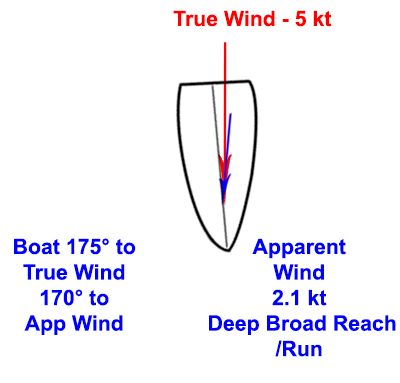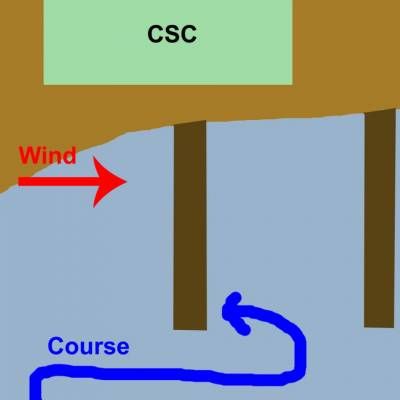I admire David Fraser's willingness to share his "less than optimal" sailing experiences in these blogs so that others can learn from his mistakes. They say there are those who don't make mistakes (I don't believe that), those who learn from others' mistakes, those who learn from their own mistakes, and those who never learn. Aiming at the second category, I want to imitate David's example by offering a recent experience of my own.
The other day I got to the Club a little early, and thought I'd play with jib-only sailing on a Quest before lessons started.
I left the (Cal Adventures) dock under jib only, having done nothing with the mainsail. I was planning to go out and dock under jib alone a few times before students showed up. That was the plan, at least.
The wind was pretty much westerly, so I was leaving on a beam reach. I knew that jib trim was really important, and that I shouldn't start out pointing too high. But for whatever reason, I couldn't point high at all. No matter what I tried, I was going slowly downwind, toward the rocks. Maybe I wasn't handling it correctly, maybe the Quest can't point high on jib alone, who knows? Sometimes it's you, sometimes it's the boat, sometimes... who knows what it is? What mattered then was that I couldn't do it.
I decided to heave to and get the main up, admitting failure (better than landing on the rocks). The mainsail doesn't always go up easily on the Quests (especially on this one), and it looked like getting the boltrope into the mast track might take some doing. When you're properly hove to, you have some sideways way on--that is, you're slideslipping--and I was going slowly, slowly toward the rocks. I had no idea how long it might take to get the main up.
















